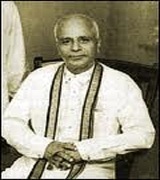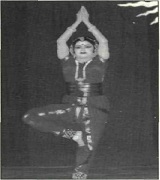Main Feature

Indian music has developed along two parallel lines, namely, Carnatic and Hindustani. It almost looks as if there is no place in either for the other. The votaries of neither system seem to enjoy music belonging to the other system. Many persons hold the view that in these days when they are striving for national unity in all directions, such a distinction in the field of music is inappropriate. But no advocate of this view has yet evolved any workable scheme for a synthesis. Without a conscious effort, no reform, however welcome, can be brought about. The first step towards this objective, will be to initiate students of music in the primary lakshana-s of the two systems and enable them to practise them.
Special Report

SOORYA NAMASKAR: A FUSION OF DANCE & YOGA
He himself is visualised as a bird and as riding a bird. The dancer had ample scope to demonstrate this aspect of the Sun. The movements to the swara patterns and the subsequent bhramari-s were reminiscent of Odissi movements. The following suite bracketed in Amritavarshini refrains, were sung in Hamsadhwani, Shanmukhapriya and Hamsanandi, where the poet sees the various aspects of the Supreme like Gayatri, Savitri, Saraswati, Brahma, Rudra in the form of Nataraja and Vishnu
Brief Profile

Ananda Shankar
Ananda Shankar, son of the legendary dancers Uday Shankar and Amala Shankar and nephew of sitar maestro Ravi Shankar, passed away on 26 March in Calcutta after a hernia operation. He was only 56 years of age. Ananda was born on 2 December 1942 in Almora after his father Uday Shankar started his cultural centre in the sylvan setting of the Himalayas. As a child he was brought up in an atmosphere which was conducive to the flowering of his artistic talents. After completing his academic studies at the Scindia School in Gwalior, he went to Benaras and learnt sitarplaying from Dr. Lalmani Mishra.


